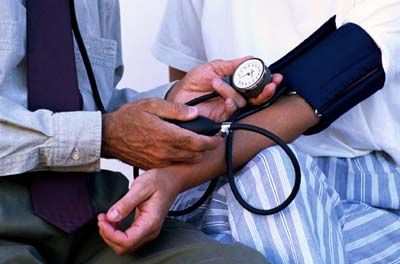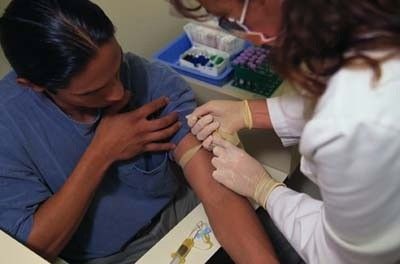High cholesterol puts us at risk for heart disease, stroke, high blood pressure, peripheral vascular disease, diabetes and retinal vein occlusion. Wait, what was that last part -- retinal vein occlusion?
The eyes aren't just the windows to your soul; it turns out they're also a window into your arteries. Just like how too much cholesterol builds up on the walls of arteries and forms a thick plaque, retinal vein occlusion happens when there's a blockage in the blood flow to and from the eye. Narrow or block the central retina artery with cholesterol and you block the connection between the optic nerve and the brain.
Advertisement
The result? A blood clot that causes sudden, painless vision loss.
According to a study published in the May 2008 issue of the "Archives of Ophthalmology," people with high total cholesterol levels were two-and-a-half times more at risk for retinal vein occlusion than those with normal or low cholesterol levels. And if you have high blood pressure (levels over 120/80), your risk jumps to three-and-a-half times higher than people with healthy levels.
What can you do? Just as recommended for preventing coronary artery disease, the National Institutes of Health recommends adopting a low-fat diet, getting regular exercise and maintaining a healthy weight to decrease the risk of retinal vein occlusion. And don't forget to have routine eye exams -- they're essential.
During an annual eye exam, your doctor can check your vision and look for signs of high cholesterol. Primarily an ophthalmologist will look for:
- Corneal arcus (Arcus senilis) -- A thin white or gray ring around the edge of the patient's cornea is actually a deposit of fat and cholesterol in the eye. While this is frequently present in older patients, it isn't considered commonplace in younger patients. If it is found in young patients, cholesterol and triglyceride treatments are usually recommended.
- Hollenhorst plaque -- Small pieces of fatty material (cholesterol) that have broken off from the wall of a blood vessel and traveled to the eye, these plaque build-ups may develop into retinal vein occlusions. When an ophthalmologist finds this, it generally indicates a serious cholesterol problem and the patient is sent for further testing.
In addition to annual eye exams, if you have hypertension, high cholesterol or diabetes (or any combination of these) and if you have any form of retinal vein occlusion, be sure to work with your doctor to routinely track your blood pressure as well as both fasting lipid and glucose levels -- and don't let cholesterol cloud your outlook.
Advertisement

